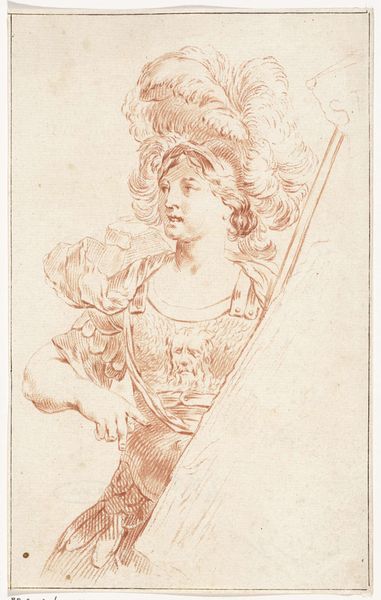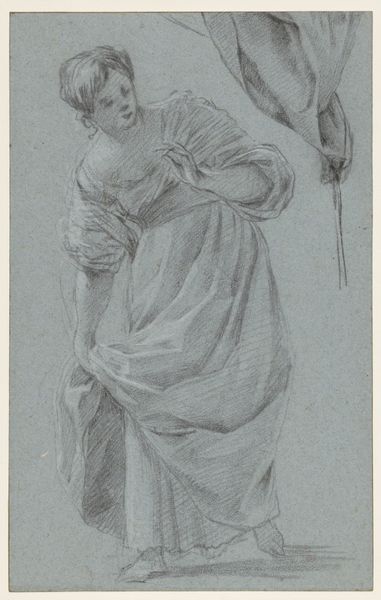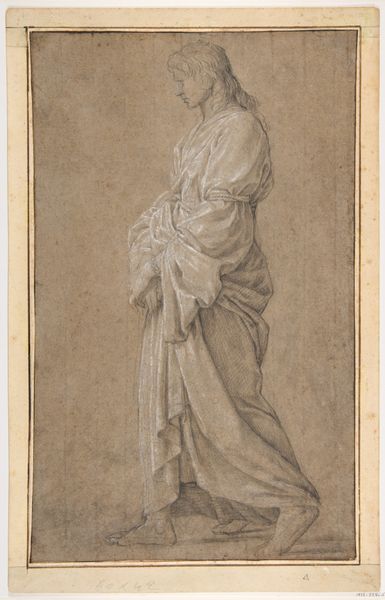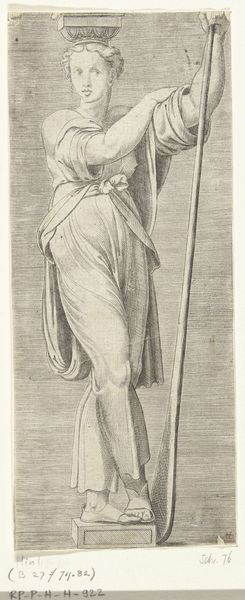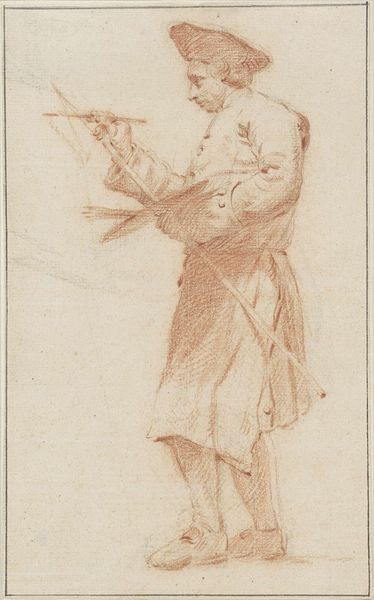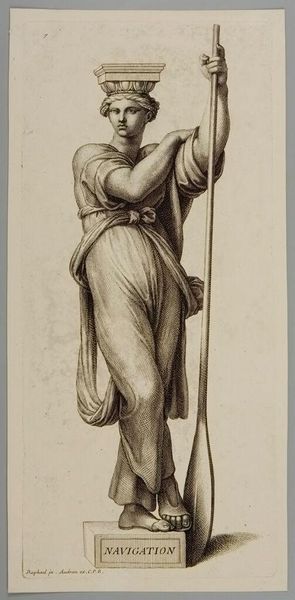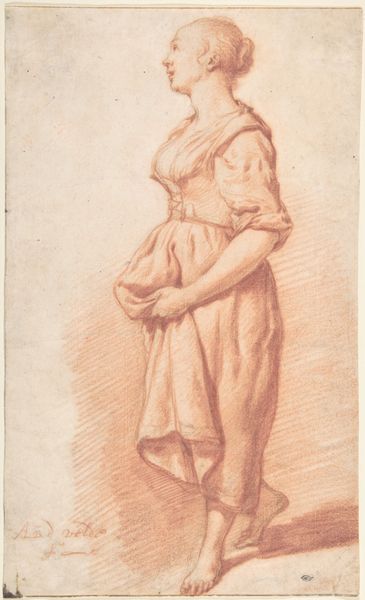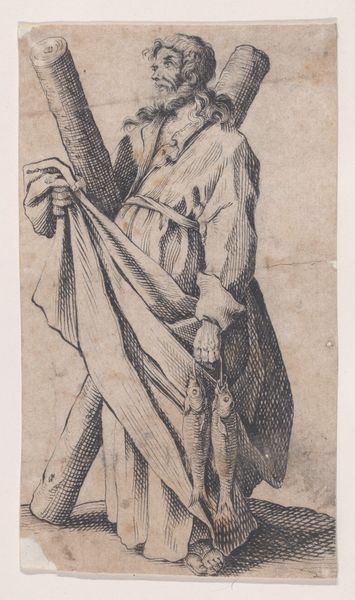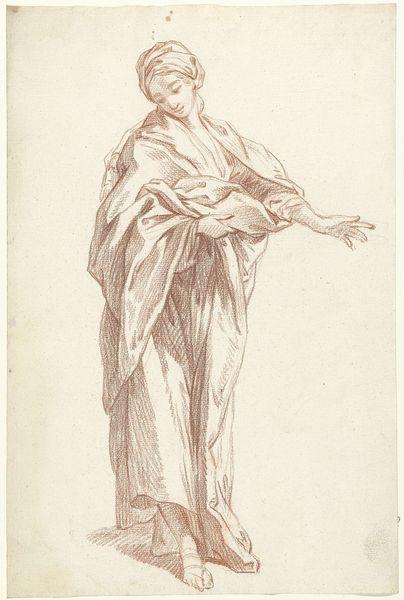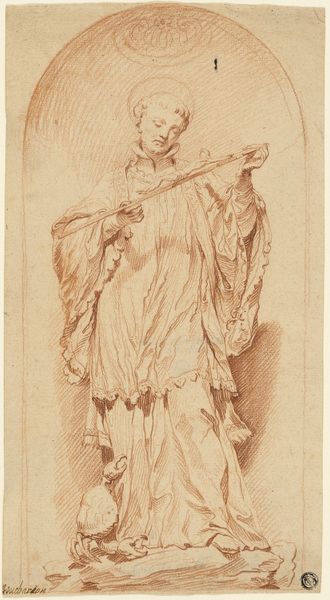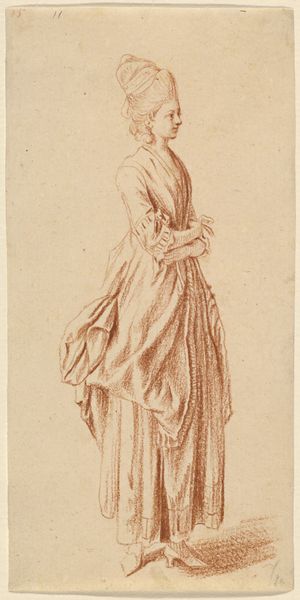
drawing, pencil
#
portrait
#
drawing
#
pencil sketch
#
figuration
#
pencil drawing
#
pencil
#
portrait drawing
#
academic-art
Dimensions: height 223 mm, width 112 mm
Copyright: Rijks Museum: Open Domain
Curator: Look at this intriguing pencil drawing by Jan Anton Garemyn, titled "Vrouw met stok," likely created sometime in the late 18th century. Editor: The first thing I notice is the economy of the lines, almost threadlike, which makes me think about how this was rendered--possibly quite rapidly on humble materials. What kind of impression does it give you? Curator: There's a quiet dignity to her. The "stok"—or stick—she carries reads as both a support and a symbol. Sticks often function as symbols of authority or even pilgrimage. Her simple clothing suggests a working-class background, which, combined with the staff, elevates her, giving her a purpose and resilience that transcends her station. Editor: Right, I'm wondering, what does a study like this tell us about Garemyn’s practice? Was it preparation for a larger work, a means of understanding human form and dress? You know, these academic studies involved rigorous observation and representation. Curator: I think so, this "academic-art" style focuses on capturing a very precise and realistic likeness, yes, but there’s something more than observation here, a desire to capture an emotional or social truth about this woman and perhaps a meditation on social stratification, or even, in some small way, honoring the working class. The staff could represent that work, in some manner. Editor: Perhaps it’s more than mere documentation, true, although these pencil lines and tones also have the purpose of modeling her form, providing shadows that simulate textures of cloth. I imagine this type of artwork circulating among studios for learning purposes. The value wasn't just aesthetic; it was instructional, providing insights into the techniques of representing the material world. Curator: Exactly. This is a portal into a past society’s way of seeing and valuing figures. How dress, posture and accessories worked together in communicating symbolic, social meaning. Editor: I’m left with a strong curiosity to know more about the origins and purpose, more about who produced these pigments and why this image, from a materials standpoint, holds the secrets to the working practices of past masters. Curator: Absolutely, it has encouraged me to reconsider everyday objects and forms through a lens that understands them as silent communicators, imbued with meaning far beyond their functional roles.
Comments
No comments
Be the first to comment and join the conversation on the ultimate creative platform.
